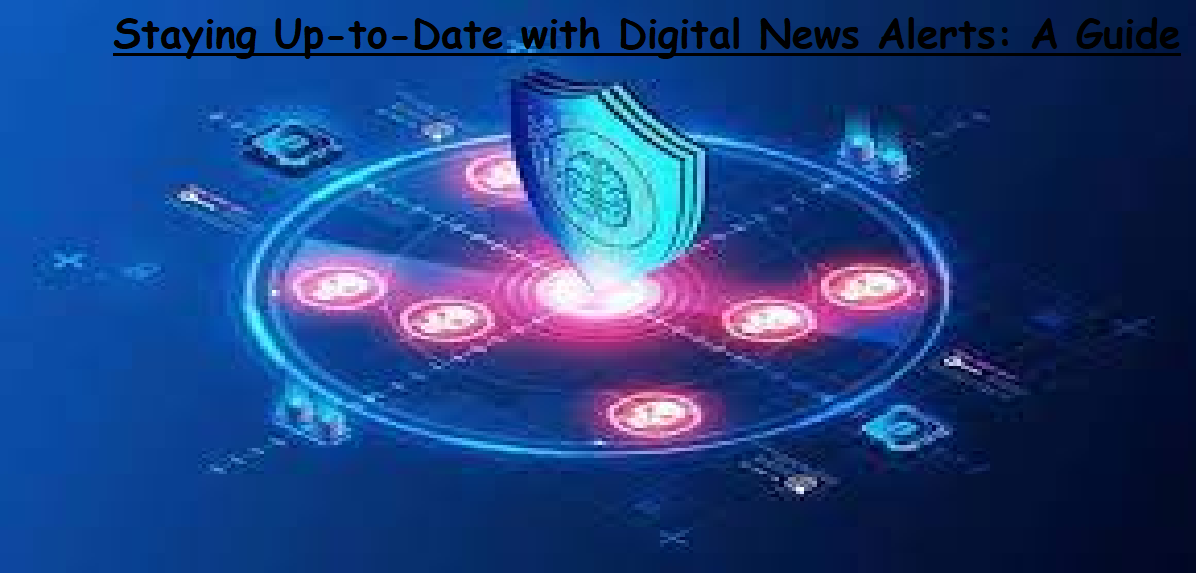Digital news alerts have revolutionized the way we consume information, providing instant updates on breaking news, events, and topics of interest. In this article, we’ll delve into the significance of digital news alerts, exploring how they work, their benefits, and how to make the most out of them in today’s fast-paced world.
Benefits of Digital News Alerts
- Real-Time Updates: Digital news alerts deliver breaking news and updates instantly, keeping users informed of the latest developments.
- Convenience: Users can customize their news alerts based on their interests and preferences, ensuring they receive relevant information tailored to their needs.
- Stay Ahead: With digital news alerts, users can stay ahead of the curve, accessing information as it happens and making informed decisions in a timely manner.
Types of Digital News Alerts
- General News Alerts: Provide updates on a wide range of topics, including politics, world events, technology, and entertainment.
- Customized Alerts: Users can personalize their alerts to receive updates on specific topics, keywords, or events of interest.
- Location-Based Alerts: Deliver news and updates relevant to a user’s location, such as weather alerts, traffic updates, and local news.
Best Practices
- Choose Reliable Sources: Select reputable news sources and platforms to ensure the accuracy and reliability of the information received.
- Customize Alerts: Tailor news alerts to your interests and preferences to avoid information overload and receive updates that matter to you.
- Manage Notifications: Adjust notification settings to control the frequency and timing of news alerts, ensuring they don’t disrupt your workflow or daily activities.
- Verify Information: Before sharing or acting on news received through alerts, verify the information from multiple sources to confirm its accuracy and legitimacy.
Impact
- Information Accessibility: Digital news alerts democratize access to information, empowering users to stay informed regardless of their location or circumstances.
- Media Consumption Habits: The prevalence has reshaped how people consume news, with many opting for personalized, on-the-go updates over traditional media outlets.
- Influence on Decision-Making: Timely access to news and updates through alerts can influence decision-making processes, whether in business, politics, or personal matters.
Challenges and Considerations
- Information Overload: The constant influx of news alerts can lead to information overload and cognitive fatigue, prompting users to carefully curate their alerts to avoid overwhelm.
- Accuracy and Trustworthiness: Ensuring the accuracy and trustworthiness of news alerts remains a challenge, with the proliferation of fake news and misinformation online.
- Privacy Concerns: Users may have concerns about privacy and data security when opting in to receive, highlighting the need for transparent practices and user consent.
Future Trends and Innovations
- AI-Powered Personalization: Advancements in artificial intelligence and machine learning are enabling more sophisticated personalization of news alerts, delivering content tailored to individual preferences and behaviors.
- Integration with Wearable Tech: The integration of with wearable devices such as smartwatches and smart glasses offers seamless access to information on the go.
- Multimedia Alerts: Future trends may see the incorporation of multimedia elements such as videos, podcasts, and interactive content, enhancing user engagement and comprehension.
Conclusion
In today’s fast-paced and interconnected world, staying informed is more crucial than ever. Serve as invaluable tools in this endeavor, offering users immediate access to breaking news, updates, and relevant information. With just a few taps or clicks, users can receive real-time updates tailored to their interests and preferences, enabling them to stay abreast of the latest developments effortlessly.
The personalized nature of digital news alerts is particularly noteworthy. Unlike traditional media sources that broadcast a broad range of topics, digital alerts allow users to curate their news feeds based on their individual interests, ensuring that they receive updates on subjects that matter most to them. This customization not only enhances the relevance of the information received but also minimizes information overload, allowing users to focus on what’s most important to them.
Furthermore, the convenience offered by cannot be overstated. Whether on the go, at work, or at home, users can receive updates directly to their devices, eliminating the need to actively seek out news through traditional channels. This immediacy and accessibility empower users to stay informed and engaged with current events, fostering a sense of connectedness and awareness in an increasingly complex world.
As technology continues to evolve, so too will the capabilities of digital news alerts. Advancements in artificial intelligence, machine learning, and data analytics are poised to further enhance the personalization and relevance of news updates, providing users with even more tailored and contextually relevant information. Additionally, the integration of digital alerts with emerging technologies such as wearable devices and smart home assistants holds the potential to further streamline the news consumption experience, making it seamlessly integrated into users’ daily lives.
FAQs (Frequently Asked Questions)
- How do I subscribe to digital news alerts?
- Subscription methods vary depending on the platform or news source. Look for options to enable notifications or alerts within the settings of your preferred news app or website.
- Are digital news alerts free to use?
- Yes, many digital news alert services are free to use, although some may offer premium features or subscriptions for additional benefits.
- Can I customize the types of news alerts I receive?
- Absolutely. Most digital news alert services allow users to customize their alerts based on topics, keywords, location, and other preferences.
- How can I manage the frequency of news alerts I receive?
- You can typically manage notification settings within the app or platform settings, adjusting the frequency and timing of alerts to suit your preferences.
- Are digital news alerts available in multiple languages?
- Yes, many digital news alert services offer multilingual support, allowing users to receive updates in their preferred language.







































